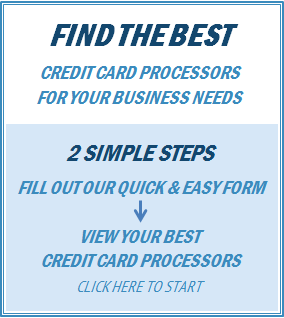Payment Processing
Transaction Processing for Online Payment Solutions
Online credit card processing remains the standard for Internet payment processing. Like all things Internet, online shopping is relatively young – the first retail sale was made in 1979, the first B2B in 1980 – but it’s exploded in the last 5 to 10 years. The vast majority of both online and offline credit, debit and check transactions go through the World Wide Web at some point between the sale and the retailer’s bank account. That’s because even offline card terminals or check verification units will use a payments gateway that runs data over the web.
The Basic Set-Up
Online business is attractive, even for traditional offline businesses. The Internet offers low capital commitments, flexibility and a place to experiment, and most of all: the chance of quickly expanding scale. Access to this new territory requires the ability to handle ecommerce wisely.
Entry into web payment processing online transactions usually comes through merchant accounts. This allows credit card processing services at an entry level for online entrepreneurs. There are many advantages, and online processing is a big step for most new businesses. The ability to take credit cards, validate and receive payments – all in a hands-off manner – represents a leap forward from dealing with customers one-on-one.
Many stop there. But payment processing companies have much more to offer.
Advanced Payment Offerings
If credit card payment processing is the basic method of monetizing an online presence, what’s the advanced version?
Some of the additional payment solutions available:
- Check processing – not all customers will have credit cards, and some of those that do will be wary of using them for online purchases. Check handling with checking account numbers offers this segment another option.
- ACH processing – ACH (Automated Clearing House) is a method for direct deposit or payment from bank to bank. This is commonly used for serial, or subscription type payments. Setting up an ACH allows your customers to pay upcoming charges automatically.
- Ecommerce payment processing – this includes credit/debit cards, but also means the integration of payment into shopping cart or other software. Ideally, a returning customer can simply authorize a new purchase without having to re-enter information. The goal is to make payment a very quick and invisible part of the shopping experience. The more invisible the payment processing software is to the user, the better.
- Custom – credit card processing for business purposes can include loyalty cards, gift cards and “virtual credit cards.” The latter has no physical card at all but can be issued for use at your site along with special discounts or incentives to gain loyalty.
- Advanced services – These merchant processing services allow you to match your particular business needs. An example would be a foreign transaction service that converts currency or immediate credit to your account based on an insured, short-term loan.
Finding the Right Merchant Processing for You
From the basic through the advanced, payment processing services are a balance between your costs and the new business you acquire. When choosing from the available payment processing services it’s important to have in mind the same considerations you had when starting your business. Knowing who your customer is, the ways they prefer to pay, the average amount of purchase, and the expected volume of sales overall – all of these will help shape the best payment processing company for you.
Keep in mind that while the fees associated with merchant card services matter a great deal (they affect your bottom line), service and the ability to customize are also important. The payment processing gateway has to be secure, reliable and quick to respond to any problems. Software and integration with the site you envision is also a concern – even a top tier processor won’t do you much good if you can’t incorporate it seamlessly into your website.
Advanced Electronic Payment
How advanced can it get? Time will tell, but here’s an example of what’s happening now:
John sees an ad about a new type of golf club in his email (he’s reading it on his Blackberry while commuting). The email is a newsletter from a site he’s visited before. Two or three clicks later and the club is on the way (next day air) to his house in time for this weekend’s golf outing.
Mary uses her GPS enabled smart phone to look for local stores that carry sweaters – she’s on her way to a birthday celebration and needs a last minute gift. She finds several stores, but one offers a 10% discount for online purchases. She authorizes a payment on her phone after checking what the store has in stock. Her purchase is waiting for pick up at the counter, gift wrapped. Next week, she’ll find an electronic coupon in her inbox, giving her $10 off on the new winter line of scarves.
Mike is looking for a better deal on his automobile insurance. He finds a great buy and sets up an auto-pay, once a month for the next six months. The certificate of insurance is printed out at his convenience and the payment is handled with an ACH transfer. Mike never sees or talks to an agent.


